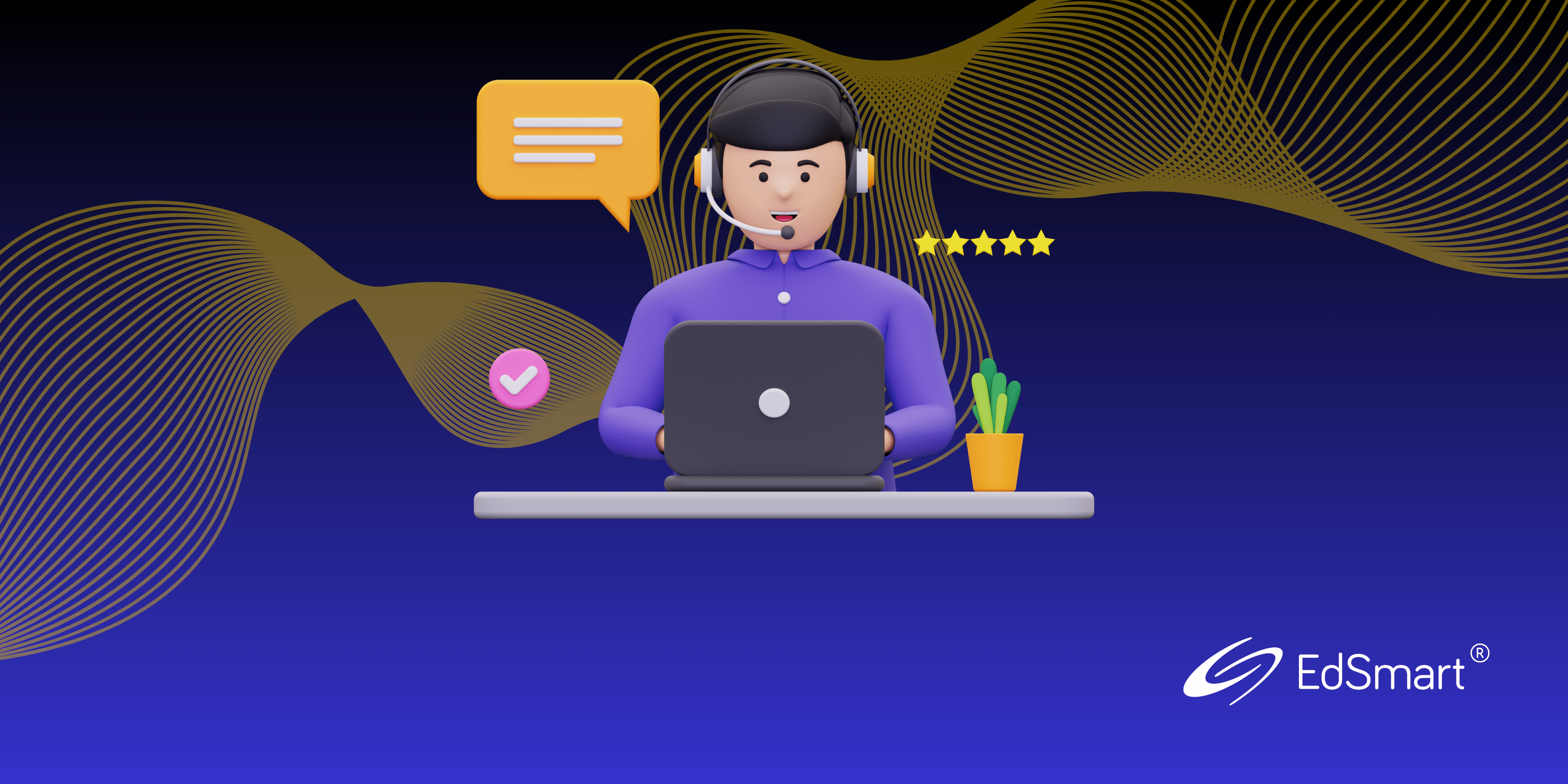Are we asking too much of our teachers? In light of a 2022 Grattan Report, we look at what teachers are expecting from their vocation, versus the reality.
“Would you ask a doctor to be the hospital car park attendant at times? If not, why would you ask that of teachers?”
Sam Sapuppo
In 2022, the Grattan Institute released a landmark study into teacher workloads: Making Time for Great Teaching: A Guide for Principals. Among many revelations, several of which weren’t very surprising to those already working in the profession, the report showed that “more than 90% of teachers say they don’t have enough time to prepare effectively for classroom teaching — the core of their job”.
The Grattan Institute’s findings echo the experiences as a teacher, vice-principal and education consultant to EdSmart, Sam Sapuppo. As he says, “I believe that we need to urgently address four key areas if we’re serious about reducing the non-teaching duties we expect teachers to do while increasing the time they have available to develop more engaging lessons and boost face-to-face teaching time.”
These critical areas are:
1. Redefining the role of teachers — including teacher levels, the types of teachers and staffing in schools;
2. Reviewing the way we select and train teachers;
3. Focusing on the technological components of teaching;
4. Redefining the required curriculum.
So, let’s examine these criteria through Sam’s eyes…
 1. REDEFINING THE ROLE OF TEACHERS
1. REDEFINING THE ROLE OF TEACHERS
Student development is a critical aspect of effective teaching. Teachers need to find ways of engaging with students, motivating students, developing positive values and attitudes, mentoring students who are having trouble, challenging students who aren’t succeeding, and differentiating how students respond to you. “As a teacher, you’re accountable for that,” says Sam.
So, where does toilet duty fit into those responsibilities? Where does yard duty fit into this? Do we need to do it that way, or is there a better way?
“Let’s have a conversation about the role of a teacher,” he remarks. “And then, let’s see if we can work out different models around the results of that conversation.”
2. REVIEWING THE WAY WE SELECT AND TRAIN TEACHERS
Sam clearly states, “It’s not our job to stop people from entering the teaching profession. On the contrary, it’s about making them aware of the full scope of the new role of a teacher. We need to review and work out a better way of selecting – and then educating – the people who want to be teachers.”
He notes that the gateway for most students into tertiary education is their Year 12 ranking score. It gives universities and further education providers an indication of a student’s intellectual capacity to complete an undergraduate degree.
However, there’s a problem with this dependence on Year 12 scores; there’s an increasing awareness across many disciplines, particularly medicine, that academic performance is only a tiny component of what’s required to succeed in the profession. When it comes to teaching, a person might meet the educational prerequisites. However, if they’re low on emotional intelligence or not good with time management, they’ll struggle in the profession itself.
Additionally, the way that teachers are trained requires an overhaul. The cumulative 30 to 40 days of teaching necessary for a Master’s degree in education doesn’t prepare you for the actual job. A more effective selection of teachers could enormously impact retention rates – for the better – by ensuring the people coming through the system are suited for the role.
As Sam emphasises, “Better training of student teachers helps them to better prepare themselves from a motivational point of view; that is, crystallise in their mind why they want to be a part of the profession to begin with, and reassure them they have what it takes to be a great teacher.”
 3. THE TECHNOLOGICAL COMPONENTS OF TEACHING
3. THE TECHNOLOGICAL COMPONENTS OF TEACHING
We need to embrace that technology can eliminate so many administrative and planning tasks that consume our day and give teachers more face-to-face teaching time.
“But it’s not simply having a program available,” says Sam. “Any technology that you bring into your school needs to decrease a teacher’s workload, not increase it.”
Technology can increase teaching time by reducing significant tasks that add to teacher duties. Following are just a few examples of how this can be done:
Customer Experience
“Technology for communication and administration in schools has been around for up to 25 years or more now,” Sam explains. “And we’re learning more and more about customer experience in schools.”
For instance, many sales businesses rely heavily on Customer Relationship Management (CRM) tools to turn basic enquiries into sales. Whether we want to accept this or not, we’re in the business of ‘selling’ our schools to the community in the form of prospective enrolments, as just one example. Many schools aren’t experts in CRM – but that’s where we need to go.
There should be enough corporate knowledge in schools and the companies who deal with them to understand what a good customer experience is about and implement it in our schools and remove some of the duties teachers are expected to do.
Administration and Communication
Data entry and compliance is a significant requirement within schools. As Sam admits, “We used to write reports once a term. In today’s classroom, teachers are writing reports every day.”
“If we’re going to be entering data, then our schools need to look at the available technology that minimises the time teachers have to spend on completing forms, student assessments, permissions, equipment bookings, professional development and other processes”, he continues. “Some examples of this are voice recognition, artificial intelligence and video.”
EdTech companies, like EdSmart, and the solutions they offer schools can remove 90% of teachers’ administrative and communication tasks. There is also a massive amount of communication between teachers, schools and parents. And, even after all that, if it still requires teachers to allocate only 10% of their time to admin, that’s a massive productivity win.
 Interoperability and Intuitiveness
Interoperability and Intuitiveness
At organisations worldwide and across multiple industries, if a company is trying to sell them software that doesn’t work with their existing software, they don’t buy them.
“In Australia, though,” says Sam, “the working model for many software companies – certainly based on my experience and the experience of many people I speak with – seems to be ‘how do we keep people from using our program to leverage off their legacy products’?”
That’s why it’s essential to make sure their products can exist side-by-side – through interoperability – with what you already have in operation when looking for EdTech. Then, you can reduce the time that teachers have to allocate to anything other than face-to-face teaching.
Curriculum technology products
Education is much more personalised these days. The disparity in the range of student abilities within a class, and being able to differentiate your methodology, differentiate the content and differentiate the delivery to cater to such a diverse range of students is enormous.
There are now a varied array of different texts for the same subject for the same year level. The academic preparation and the effectiveness of lessons become essential. To meet this challenge, teachers now have to learn a range of technological tools because the days of having a single textbook, and teaching to that text, are gone.
As Sam explains, “Although the Internet has become a new library, it’s not a solution; teachers still have to curate the content – assess its veracity and suitability for their students – which takes a considerable amount of time and resources.”
“Teachers have long-needed curriculum products with integrated components; products that create resources, do the program and lesson planning, and help you assess students. Today’s technology provides those resources to teachers.”
Several tech companies have developed products that help teachers plan lessons by supplying online resources that meet the demands of the curriculum. These programs can also help teachers tailor the content for the class and accommodate the needs of individual students.
Furthermore, some programs help students learn and help teachers identify weaknesses in reading, comprehension and writing skills and what practices they need to support student learning.
 4. REDEFINING THE REQUIRED CURRICULUM
4. REDEFINING THE REQUIRED CURRICULUM
Sam doesn’t mince words when he says, “What we teach in schools is a contentious area and it’s impossible to raise this without kicking off an argument.”
Several politicians and commentators are wanting to fight political culture wars about, for example, what’s taught in history classes or the adoption of a more American system where parents review books, texts and courses at the school council level. Is that the future our kids need?
In commenting about Australia, Sam believes we’re at the opposite end of that spectrum: “We leave it to the classroom teachers and the faculty heads to decide what we’re doing in the school.”
Fortunately, the curriculum is in the process of working itself out. Once that’s done, it means that people in EdTech – the programmers, the engineers, the designers – can work on the curriculum resources to support delivering it effectively into classrooms.
“When we know what we have to teach, the technology that enables us to shake off time-consuming admin can be better utilised to deliver a lesson that engages, motivates and challenges students,” Sam concedes.
IN CONCLUSION
Part of the core challenge facing teachers and school leaders today is how they reconcile the reasons and the motivations behind becoming a teacher with the day-to-day tasks of the job.
We need to re-assess what we believe teacher duties should be. We need to discuss whether there are other attributes to be considered when selecting school leavers and graduates applying for admission into teaching degrees.
As Sam Sapuppo explains, “I have a firmly-held belief that the technology available to schools is the answer to increasing the time a teacher has available to them to plan and deliver lessons. From what I’ve seen firsthand, though, schools are afraid to make it the complete answer.”
“Instead, we need to change that mentality and forge a culture of change that embraces what technology can offer teachers and school administrators ultimately delivering a world’s-best education to students.”
EdSmart can help you reduce teacher workloads. Contact us to find out how.



